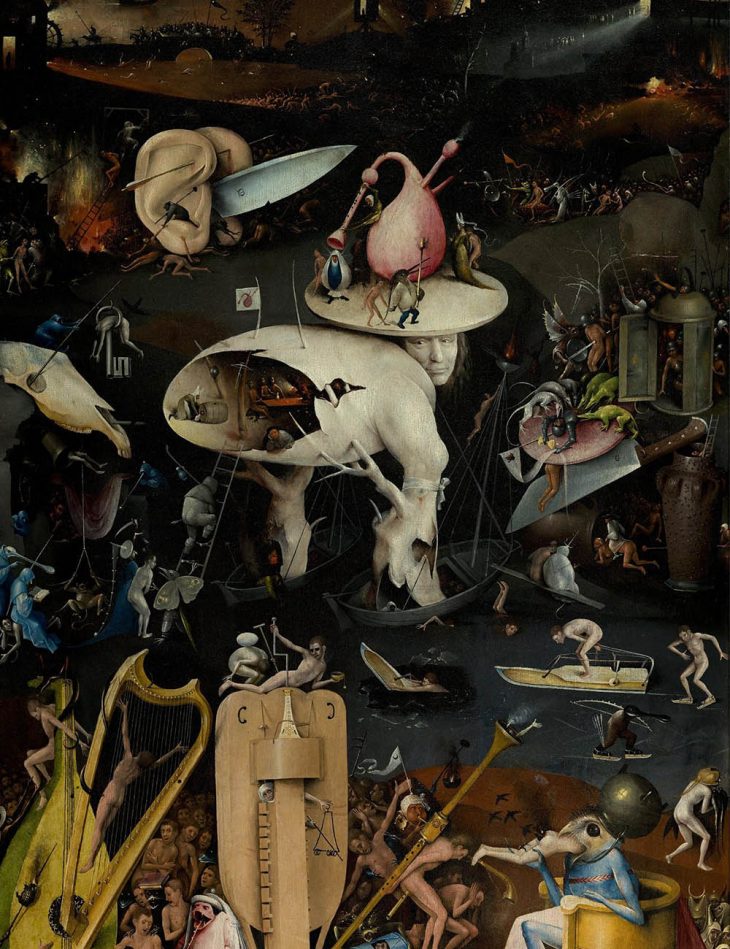The Grotesque
Techniques. Resources. Creative Processes. Genres
We could make this publication thanks to small donations. How is 3 minutos de arte supported?
The Grotesque
The grotesque is that which goes against the ideal of beauty; it violently opposes the representation of beauty according to the conventional norms of classical art.
In general, this is the name given to what is exaggerated, horrible, and bestial-looking, and everything that could inhabit the world of darkness or a nightmare. It is a representation (most of the time fantastic) that goes from the ridiculous to the macabre, resulting in strange, bizarre, and, above all, disturbing works of art.
The grotesque is a resource to emphasize the form or the idea. It can deform features as if to exalt them (a kind of caricature) or it can show an exaggerated scene with strange, mysterious, even frightening characters (beasts in human attitudes or human half-beasts) as a kind of allegory, a symbolic representation of an idea.
The exaggerated rupture with the conventional generates surprise, impact, and shock. And that surprise can turn into fascination, laughter, or horror.
The grotesque is usually used to represent evil, infernal matters, and, in general, the darkest side of the human being, and it is very successful since, strangely enough, it fascinates the spectator the more it moves away from that ideal of beauty. (Think of cinema, for example, and the success of the horror and fantasy genres, or why this resource is used so much in cartoons or in children’s stories.)
It is a resource that enhances fantasy and plays with the viewer’s unconscious. That is why it is strongly rooted in the myths and traditions of peoples. It is very present in the collective unconscious of every culture.
The origin of the name is interesting. The word “grotesque” (“grottesco” in Italian, literally “of a cave”) was first used to name the mural paintings that were found in the ruins of what was once a palace built by Nero (a monstrous character without a doubt). As these ruins were originally thought to be grottoes (“grotta” in Italian), the name came about to denote the “works found in grottoes.”
Image: Hell (right panel of The Garden of Earthly Delights), 1490/1500. El Bosco
Recommended links:
The Garden of Earthly Delights.
Characteristic Elements of the Painting of the Flemish Primitives.
Artistic Movements I: from Classical Antiquity to Rococo.
The Arnolfini Portrait, Jan van Eyck.
The Money Changer and His Wife, Quentin Massys.
Van Eyck and the Rediscovery of Oil.
You can also find more material using the search engine.
Would you like to support 3 minutos de arte?
Our project.




0 Comments